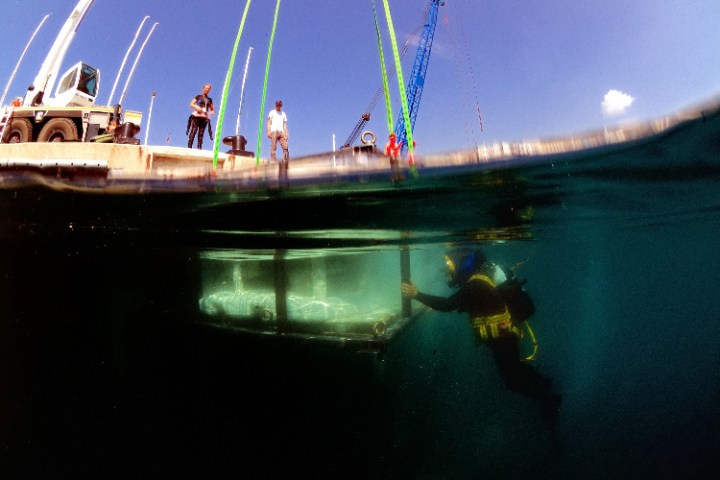
The project was spearheaded by the Prince Albert II of Monaco Foundation, which contracted with Dutch maritime services company Boskalis for the project. Boskalis was selected for the endeavor because it uses a superior dolomite sand material in the creation of its artificial reefs. Previous reef projects have used concrete reef structures to create new habitats, but these areas were colonized very slowly by the indigenous ocean creatures — presumably because they weren’t realistic enough.
The Netherlands-based Boskalis, along with the Monaco’s Comers laboratory and the AMPN (Association Monégasque de Protection de la Nature), is designing and 3D printing six artificial reef structures. Each one takes about 13 hours to print and uses a naturally occurring dolomite sand held together with a special adhesive. Each reef measures 1.2 x 2 meters and weighs 2.5 tons. The reefs will be submerged 27 meters into the waters off the shore of Monaco starting in the spring of 2016. The first printed reef was delivered recently to Prince Albert II of Monaco in a ceremony held at the city’s local Oceanographic Museum.
These structures will be submerged in the Larvotto preserve alongside existing coral reef structures, allowing scientists to study the ecological development of an artificial sand reef and compare it to a nearby natural reef. The placement also provides the opportunity to closely monitor the adoption of this sand-based reef and compare it to the development of previously studied concrete reefs. The continuous monitoring of this new habitat is expected to start next spring and will last at least two years.
Editors' Recommendations
- 3D printed cheesecake? Inside the culinary quest to make a Star Trek food replicator
- AMD’s revolutionary 3D V-Cache chip could launch very soon
- Fighting football injuries with 3D-printed, hyper-personalized pads
- Need a last-minute Halloween costume? Check out these 3D-printable getups
- NASA is testing a 3D printer that uses moon dust to print in space




